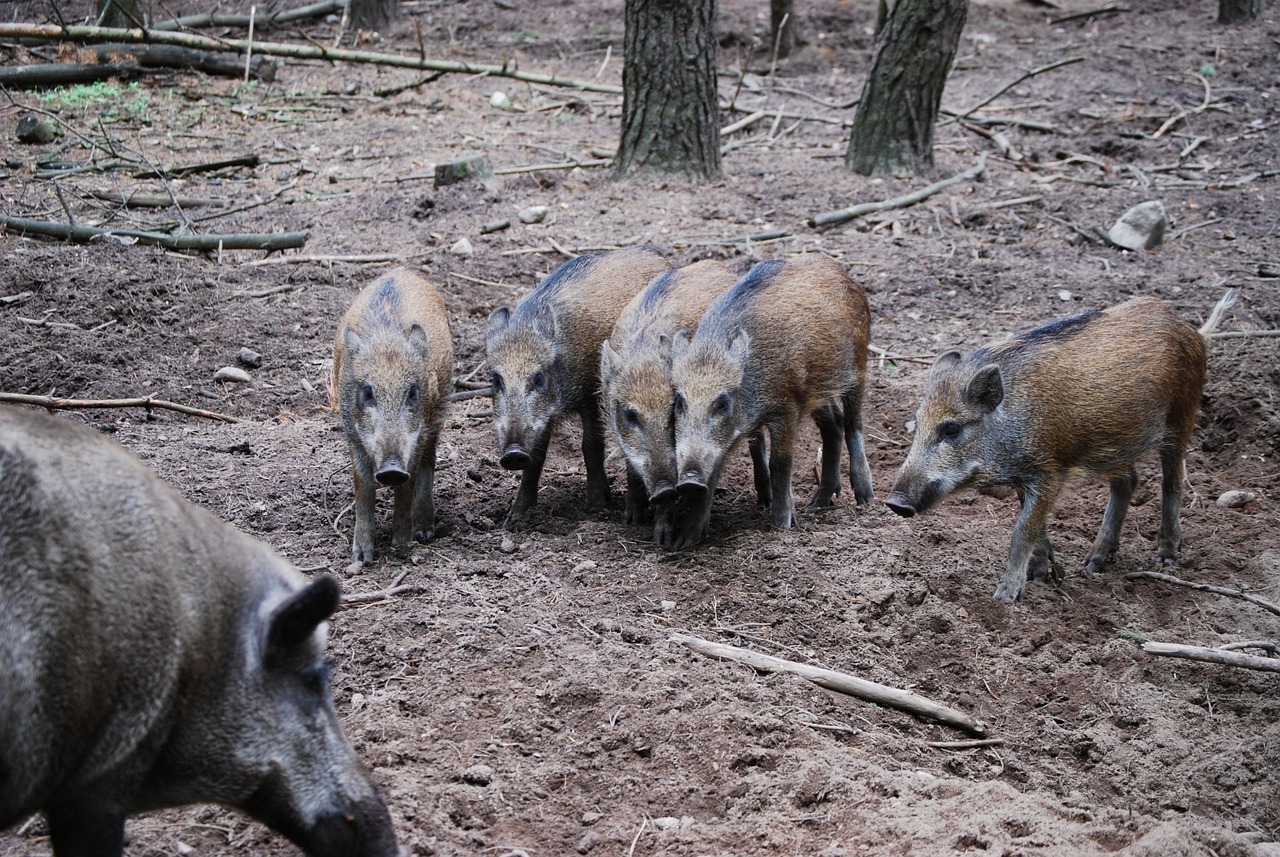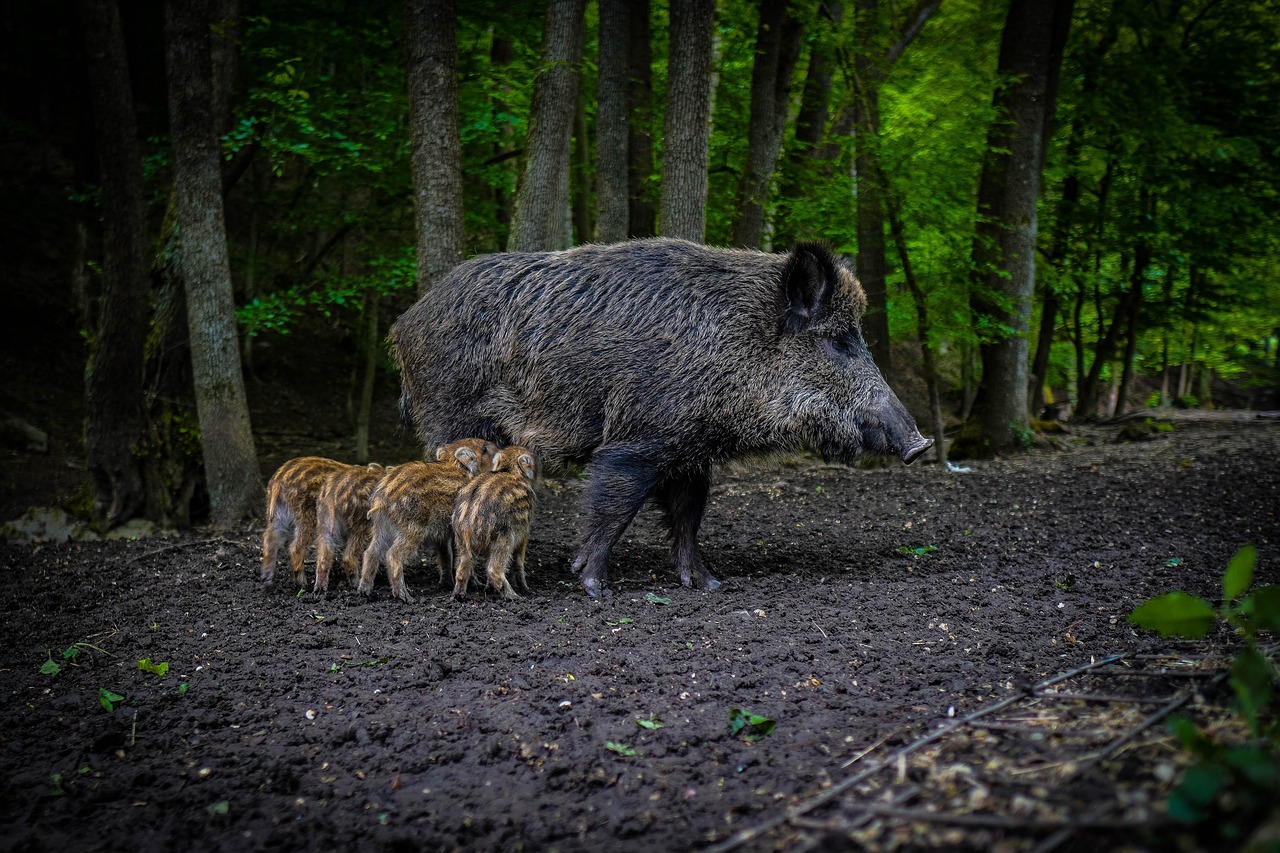Wild boar



Characteristics:
The wild boar is a sturdy animal with short legs, a long body, and a large head with a flexible snout. It measures 120–180 cm in length and stands 70–100 cm high at the shoulder. The coat is dark brown to black and bristly, becoming thicker in winter. The male (boar) has strong tusks used for defense, while the female (sow) is smaller and lacks prominent tusks.
Distribution:
Wild boar are mainly found in southern and central Sweden but are gradually spreading northwards. They prefer deciduous and mixed forests close to farmland, fields, and wetlands, where they can find both cover and abundant food.
Diet:
Wild boar are omnivorous. They feed on roots, acorns, worms, insects, plants, cereals, maize, and occasionally small animals. They use their snout to dig in the ground for food, leaving characteristic rooting marks.
Young:
Sows usually give birth to 4–6 piglets (sometimes more) during januari-mars. The piglets are brown with light longitudinal stripes that serve as camouflage; these fade after a few months.
Rut:
Rutting often occurs in the fall., though mating can happen year-round depending on climate and food availability.
Calls:
Wild boar communicate using various grunts, snorts, and squeals. When threatened or alarmed, they can produce loud, harsh screams.
Tracks:
Wild boar tracks resemble those of deer but are rounder and broader, about 5–7 cm long. Rooting marks in the soil and piles of droppings are also clear signs of their presence.
Hunting:
Wild boar are hunted year-round, mainly through stand hunting, baiting, or driven hunts. They are nocturnal and cautious, often moving in groups called sounders. Adult males usually live alone outside the breeding season.
Weapon Class:
Hunting adult wild boar requires a Class 1 rifle, meaning ammunition with at least 2,700 joules of energy at 100 meters.
